Abstract and Diagrammatic Reasoning Tests – Guide for 2026
Updated November 14, 2023
- What Are Abstract/Diagrammatic Reasoning Tests?
- The History of Abstract Reasoning Tests
- Why Do Employers Use These Tests?
- What to Expect on an Abstract or Diagrammatic Reasoning Test in 2025
- Abstract and Diagrammatic Reasoning Practice Questions
empty
empty
- How to Pass Abstract Reasoning Tests – Top Tips in 2026
- Summary
What Are Abstract/Diagrammatic Reasoning Tests?
Diagrammatic reasoning tests (also known as abstract reasoning tests) are designed to measure an individual’s ability to problem-solve and analyze visual information, such as diagrams and patterns.
They do not rely on technical or industry knowledge, language or mathematical skills, but simply an individual’s reasoning capability and, it could be argued, intelligence.
Diagrammatic tests use diagrams or pictures rather than words or numbers.
Diagrammatic reasoning tests are a specific type of abstract reasoning test designed to measure your ability to infer a set of rules from a diagram and then to apply those rules to a new situation.
Diagrammatic reasoning questions are often found in tests aimed at selecting information technology specialists who need to work through complex problems in an analytical way.
The History of Abstract Reasoning Tests
Abstract reasoning tests date back to the research done by psychologist Charles Spearman in the 1920s.
Spearman used a statistical technique called factor analysis to examine relationships between people’s scores on different intelligence tests.
He concluded that people who do well on some intelligence tests also do well on other types of tests (for example, verbal, numerical or spatial).
Conversely, if people do poorly on an intelligence test, they also tended to do poorly on other intellectual tests.
This led him to believe that there are one or more factors that are common to all intellectual tasks.
As a result of this research, Spearman developed a two-factor theory of intelligence.
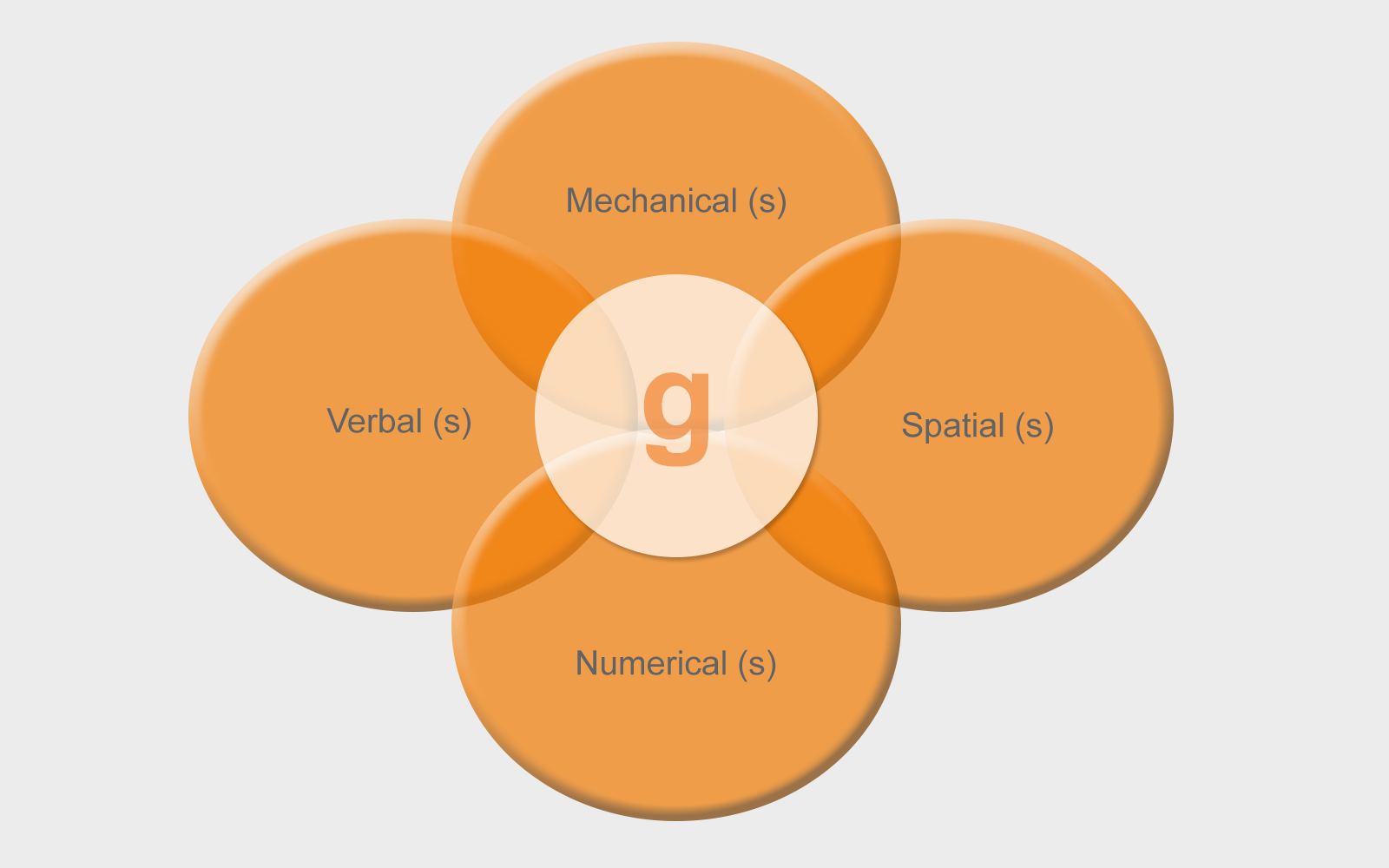
Prepare for Any Job Assessment Test with JobTestPrep
Spearman’s first factor of intelligence, ‘g’, was made of mechanical, verbal, spatial and numerical.
As the diagram shows, Spearman said that intelligence is mainly made up of ‘g’, with bright people having a lot and dull people having less.
People may also vary according to their specific abilities, which he referred to as ‘s’. For example, one person might be better at math, while another would be very good verbally.
However, Spearman placed much more importance on ‘g’ and believed that the most important information about someone’s intellectual ability is an estimate or measurement of ‘g’.
Even though Spearman’s research was done many years ago, his theory of ‘g’ is still widely accepted by psychologists and a great deal of research has supported it.
Spearman defined ‘g’ as:
‘the innate ability to perceive relationships and educe co-relationships’
If we replace the word ‘educe’ with ‘work out’ then you can see why abstract reasoning questions are seen to be a good measure of general intelligence, as they test your ability to perceive relationships and then to work out any co-relationships without you requiring any knowledge of language or mathematics.
Why Do Employers Use These Tests?
Employers, universities and schools commonly use abstract reasoning tests in their application processes.
The questions consist of items that require you to recognize patterns and similarities between shapes and figures.
Abstract reasoning tests assess your ability to understand complex concepts and assimilate new information beyond your previous experience.
As a measure of reasoning, abstract reasoning tests are independent of educational and cultural backgrounds and can indicate intellectual potential.
This type of test stands alone; it is not something that can be studied for, and therefore it provides companies and institutions with a true picture of an individual’s abstract thinking ability.
These tests are most popular in technical industries where logic, problem-solving and strategy are essential skills – such as engineering, IT or in the military.
However, as they also provide the best measure of your general intellectual ability, they are very widely used and you will usually find some questions of this type whichever tests you are given.
These tests are particularly valued where the job you are applying for involves:
- A high degree of problem-solving
- Dealing with complex data or concepts
- Developing strategies or policies
- Performing non-routine tasks where initiative is required
Psychologists believe that abstract reasoning questions provide the best indication of your ability to:
- Learn new things
- Think on your feet and overcome problems
- Figure out and interpret trends in data and patterns
- Solve problems
This is very important in jobs where you are required to make decisions based on the information in front of you, rather than by following established procedures.
You are unlikely to be asked diagrammatic reasoning questions unless the job calls for a high level of analytical abstract reasoning skills.
These types of questions are usually restricted to technical jobs in information technology but may also be used to select for technical jobs in the finance industry.
If the employer has made any mention of diagrammatic reasoning, you should ask them to clarify exactly what they mean, and if possible, to supply some example questions.
What to Expect on an Abstract or Diagrammatic Reasoning Test in 2025
Abstract reasoning questions are presented visually, asking the candidate to make sense of a diagram or a pattern, and solve the problem using logic.
They are always multiple-choice and have a strict time limit. There are often more questions than most people could complete within the given time; the tests are all about assessing an individual’s accuracy and speed.
The types of questions you might find in an abstract reasoning test include:
- Finding the missing item by working out a pattern of logic in a matrix-style diagram
- Establishing a set of rules from a sequence of inputs and outputs in a diagram, then applying those rules to a new sequence where information is missing
- Looking at shapes or patterns and deciphering what comes next
- Visualizing a 3D shape or working with mirror images/reflections
- Working out cube nets or what shapes will look like when folded
Some employers use paper tests, whilst others opt for online versions.
Diagrammatic reasoning questions approximate the type of reasoning used by information technology professionals to design and maintain software systems.
That is, they require you to:
- Infer rules from a diagram and then apply those rules to a new situation
- Follow a series of logical instructions presented using symbols
- Follow flowchart or pseudo-code logic
Prepare for Any Job Assessment Test with JobTestPrep
Abstract and Diagrammatic Reasoning Practice Questions
Here are some example questions for both standard abstract reasoning and diagrammatic reasoning tests, with hints and tips on how to answer:
Abstract Reasoning

If you need to prepare for a number of different employment tests and want to outsmart the competition, choose a Premium Membership from JobTestPrep.
You will get access to three PrepPacks of your choice, from a database that covers all the major test providers and employers and tailored profession packs.
Prepare for Any Job Assessment Test with JobTestPrep
1. Which figure completes the series?
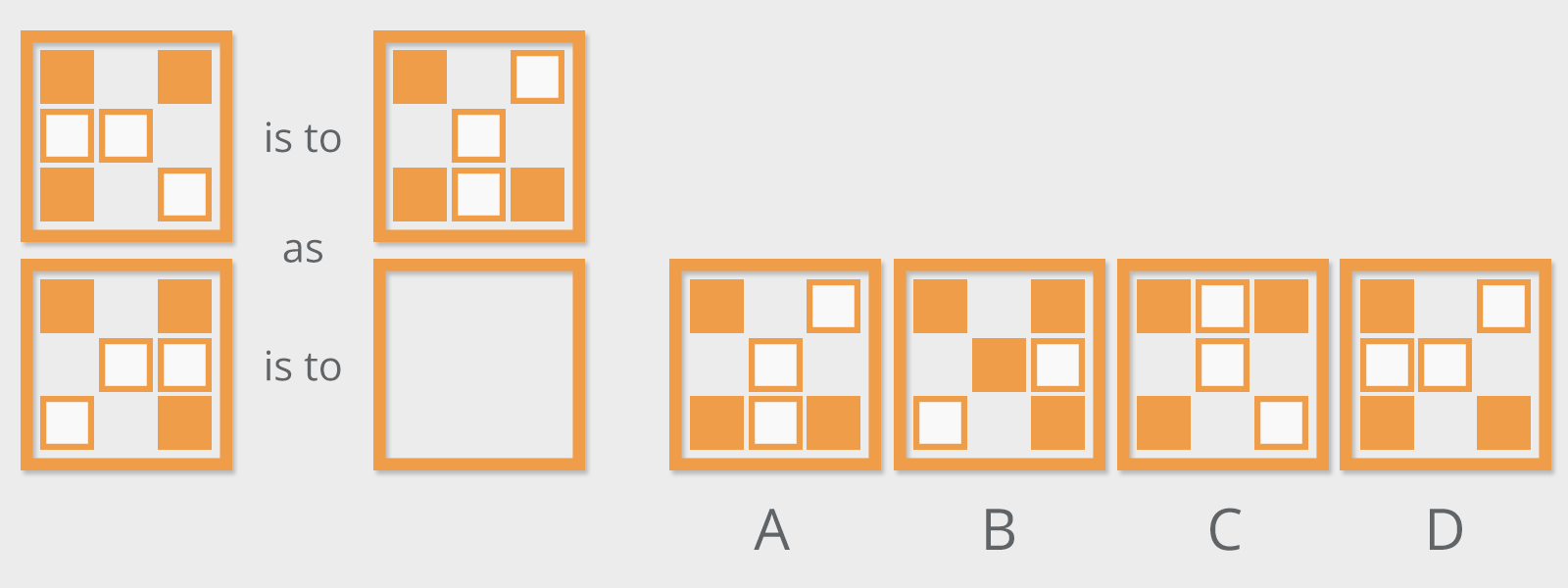
2. Which figure completes the statement?

3. Which figure is the odd one out?
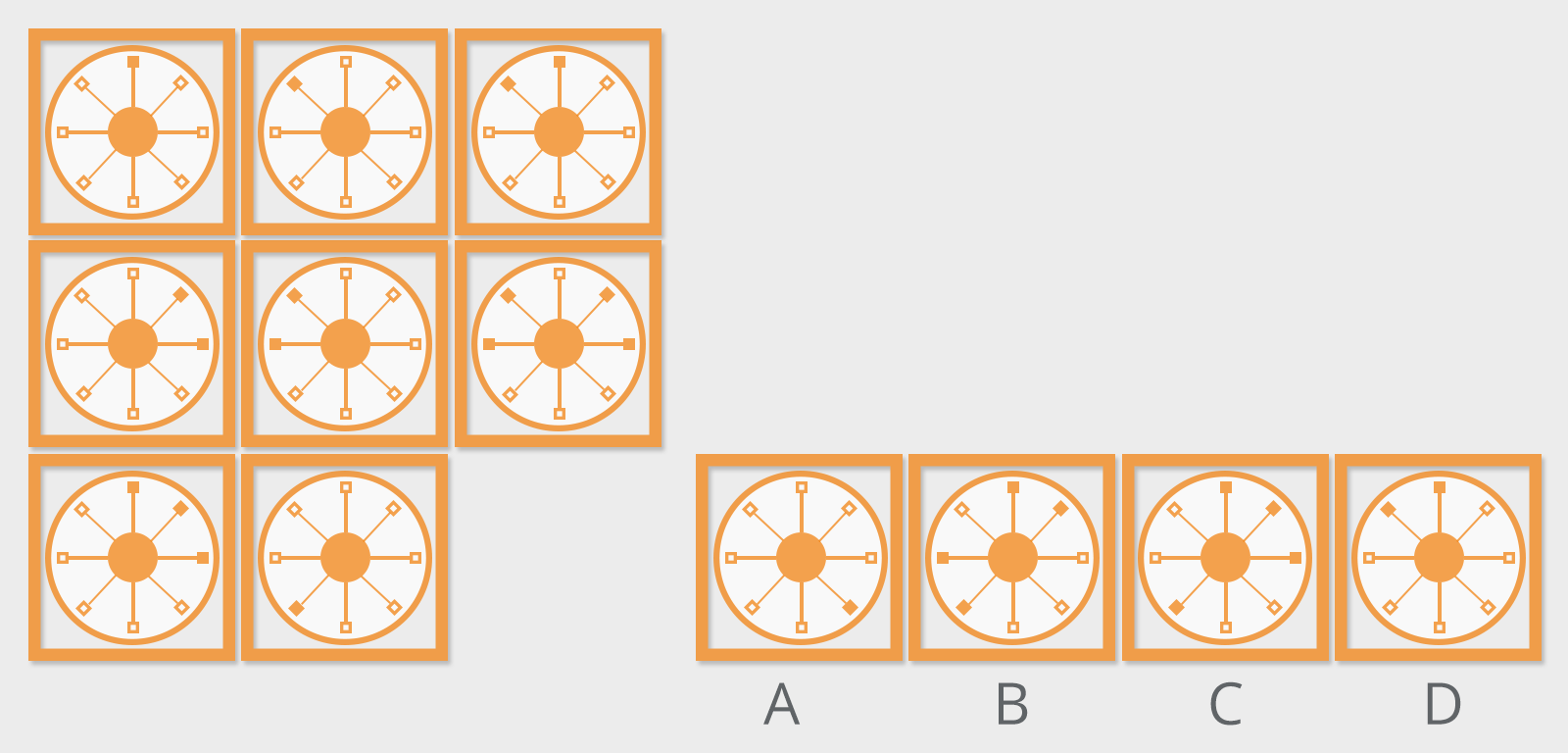
4. Which figure completes the series?
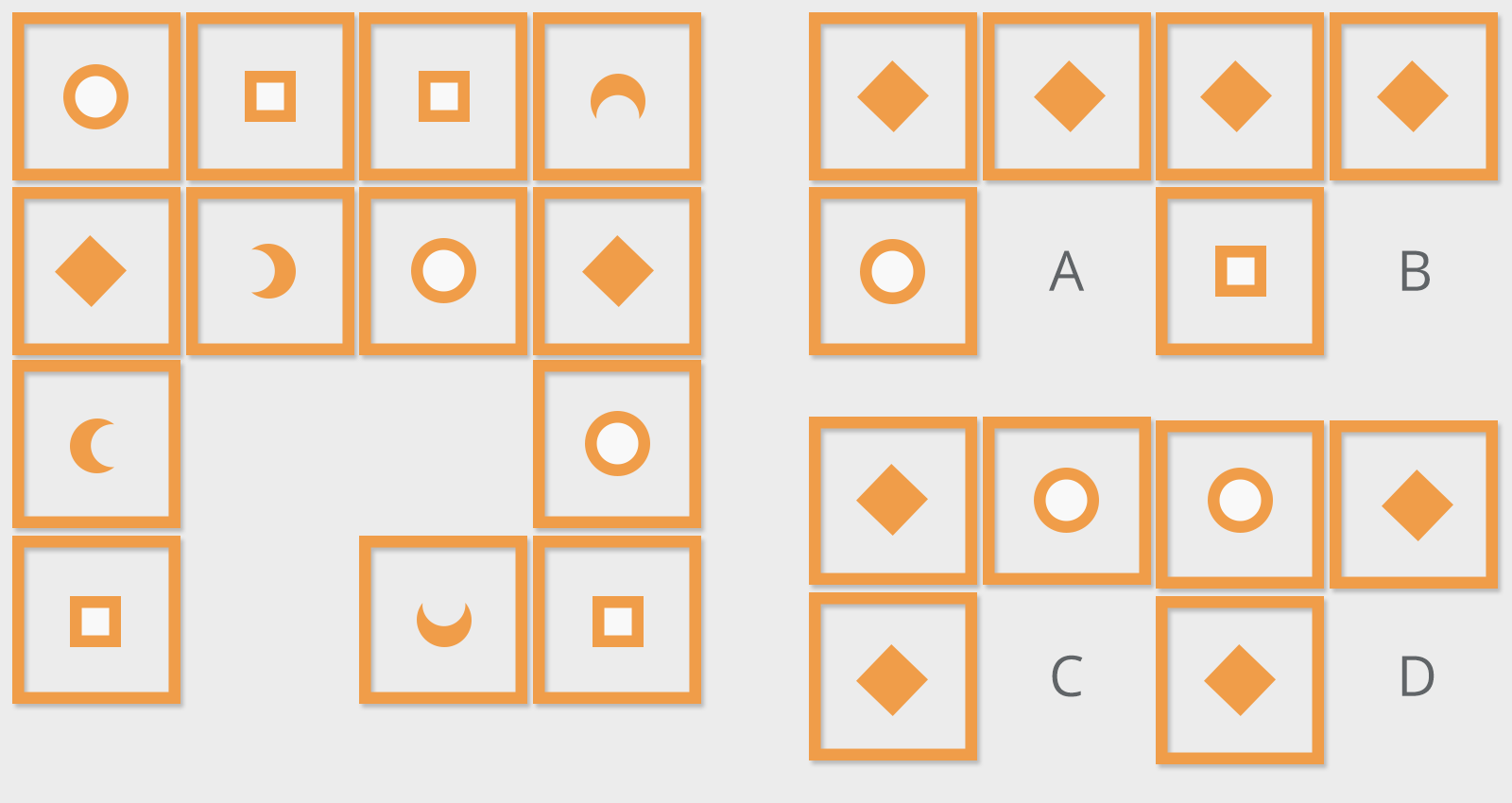
5. Which figure completes the grid?
Prepare for Any Job Assessment Test with JobTestPrep
Diagrammatic Reasoning Tests
The diagram below shows inputs and outputs. The operators or processes are shown in the small boxes.
You need to determine what effect each of the operators or processes is having on the input to produce the output shown.
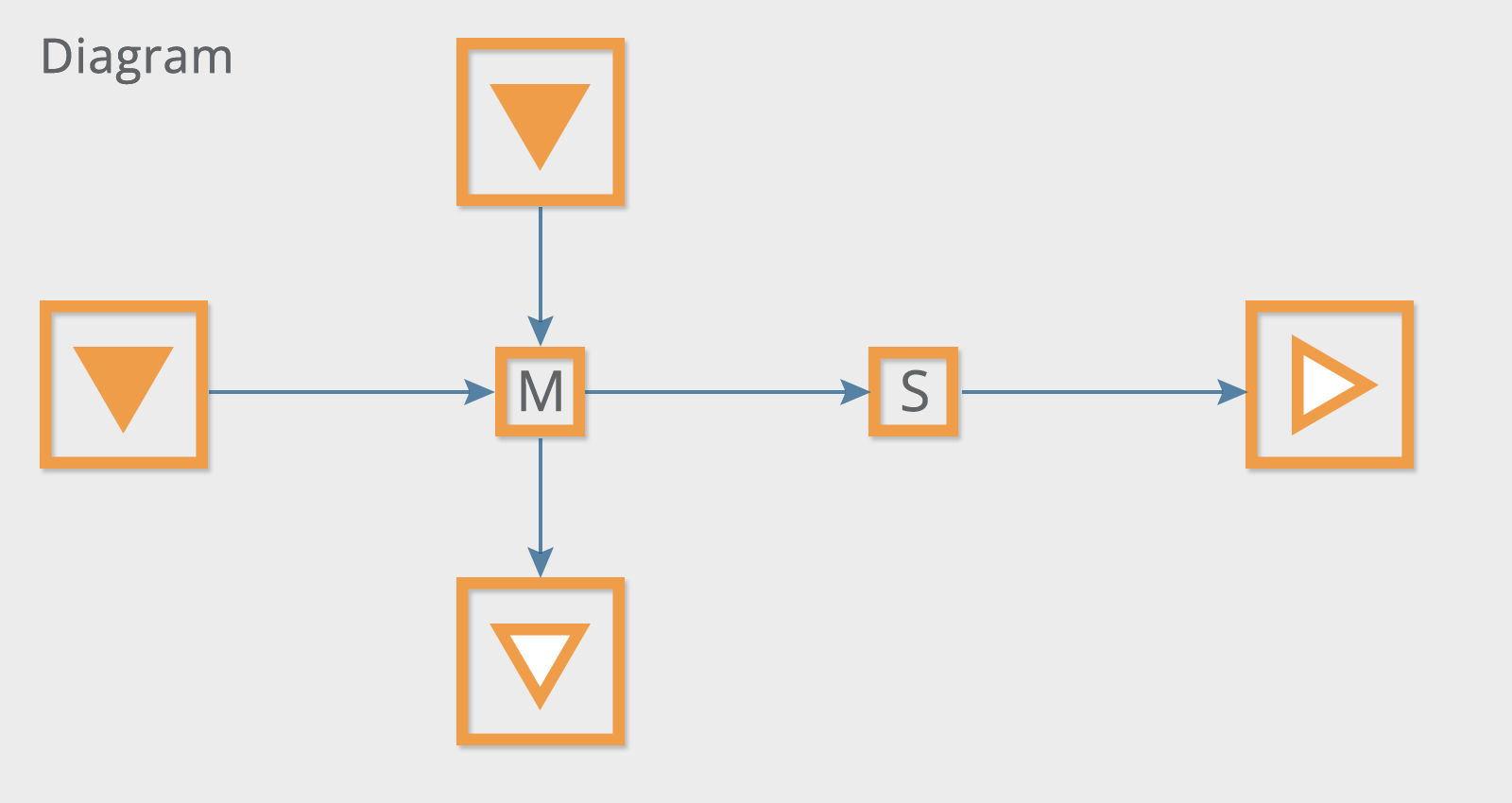

1. The functions 'M' and 'S' transform the input shapes in a certain way. You need to use the diagram to determine what effect each of these functions has.
Apply them to the input shape in the question to arrive at the correct output.
Prepare for Any Job Assessment Test with JobTestPrep
Another type of question that appears in these tests measures your ability to follow a set of logical instructions.
In the next example, the operators are defined in the first diagram.
Each operator acts on the figure that it is attached to.
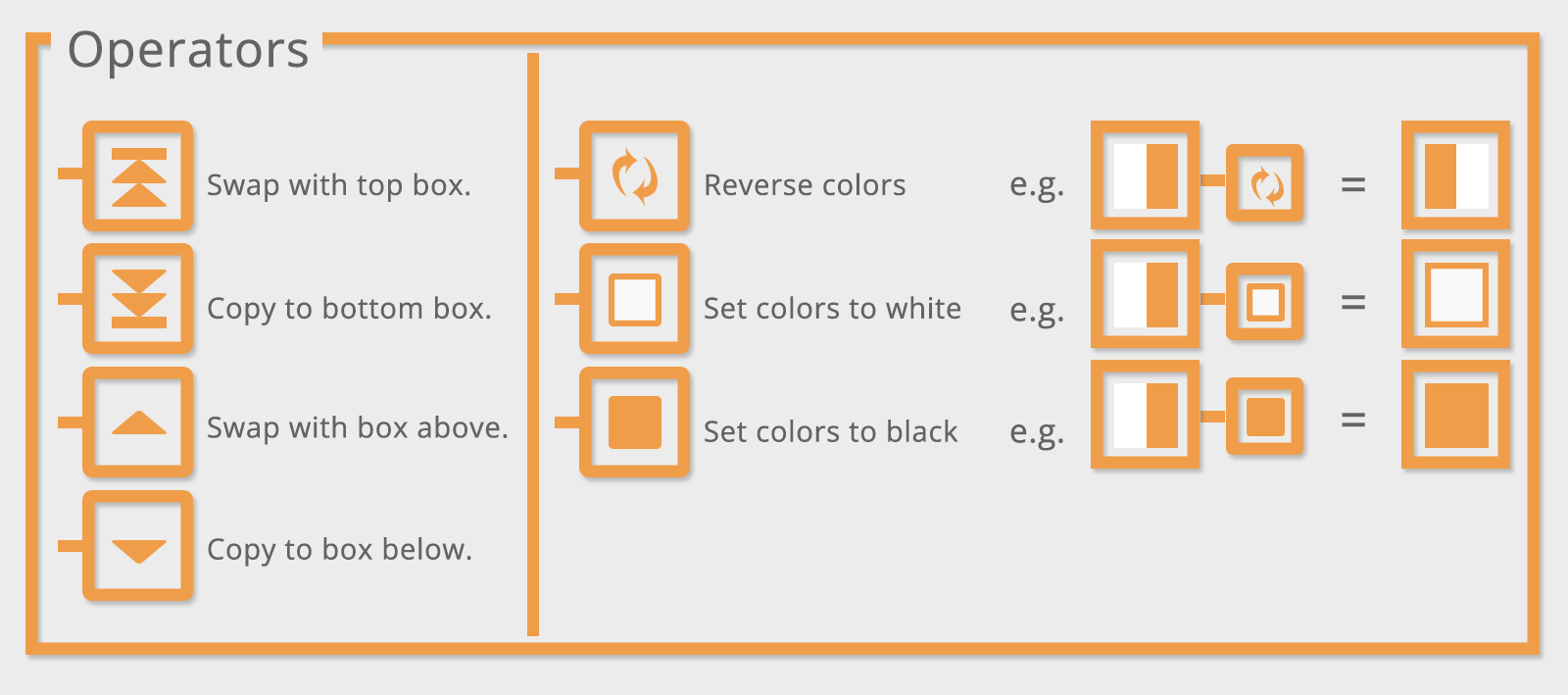
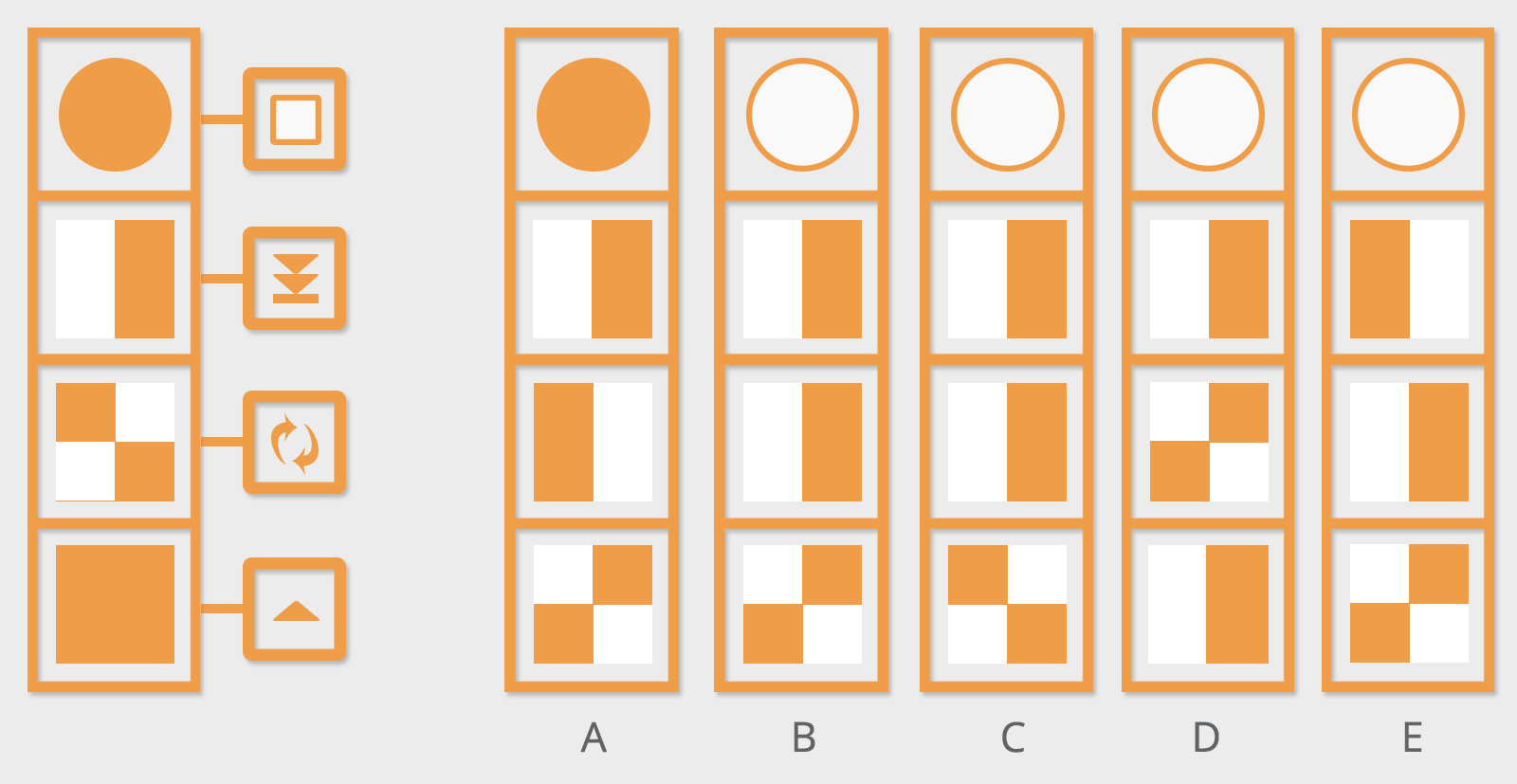
2. The sequence of operations is from top to bottom. Use this information to answer the questions.
Which figure results from the operations shown?
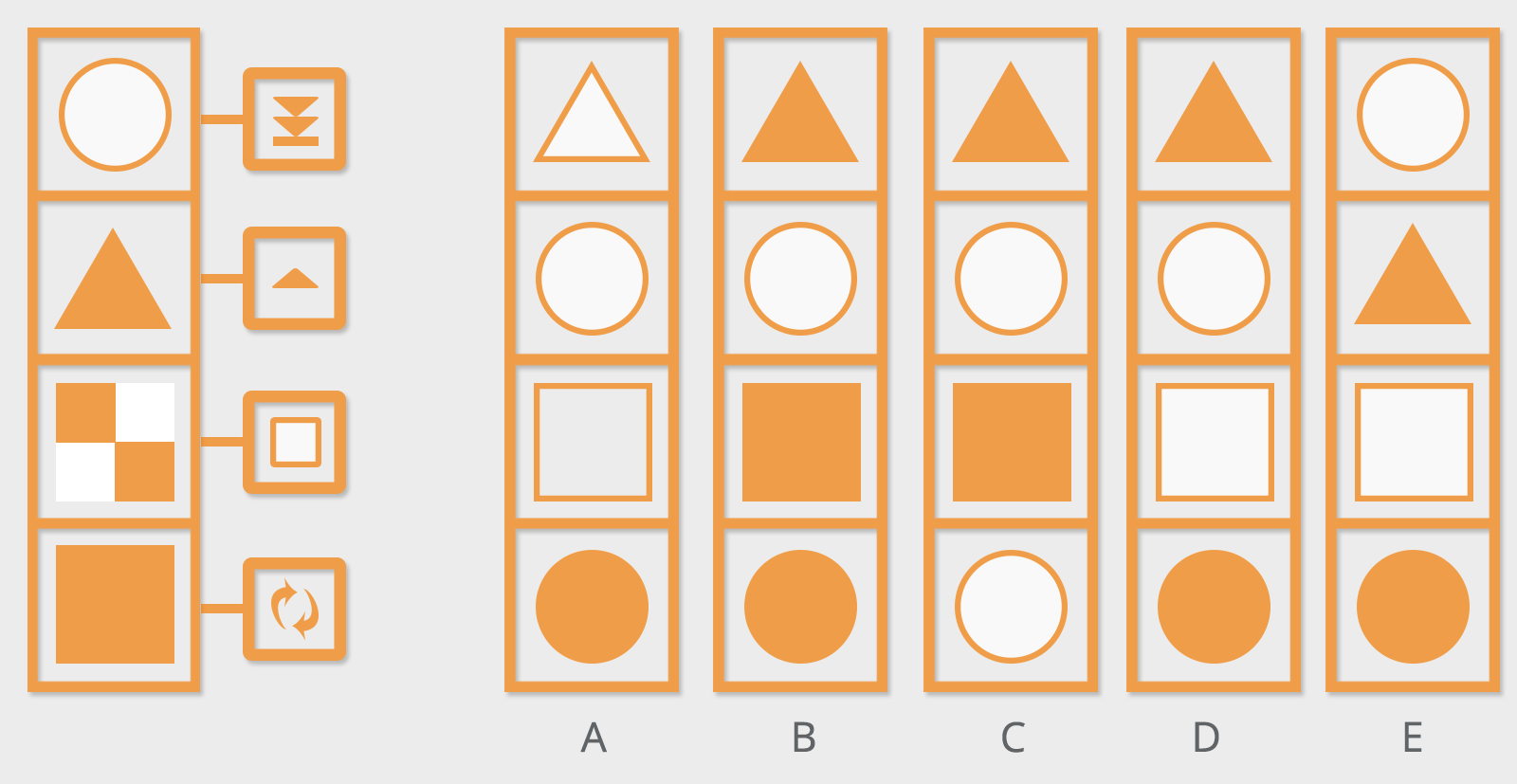
Which figure results from the operations shown?
Prepare for Any Job Assessment Test with JobTestPrep
How to Pass Abstract Reasoning Tests – Top Tips in 2026
Abstract or diagrammatic tests are valued because they cancel out the need for existing knowledge.
Whilst it is not possible to revise for these tests, there is preparation you can do.
Step 1. Research the Test Format
A crucial element of preparation for any type of abstract reasoning test is to familiarize yourself with the format.
At first glance, a test of this kind can be extremely daunting; it’s easy for panic to set in, which is not conducive to logical thinking.
By looking at the types of questions you will be faced with, you will become more comfortable with the format and be able to think clearly when under pressure.
Working through practice tests can help condition your brain to the question types and enable you to get to an answer quicker.
Step 2. Check Your Work
Practice your accuracy and the art of checking back through your work for errors or misread questions.
Step 3. Sketch Your Answers on Rough Paper
Don’t be afraid to draw the shapes and experiment on paper before writing your answer – you might be provided with a piece of rough paper and a pencil, but if not, ask.
Step 4. Read the Questions
Pay attention to details and read the question carefully.
Step 5. Be Mindful of Time
Work as quickly as you can but without sacrificing your accuracy. Take note of any time limits the test has.
Step 6. Practice Working Methodically
Apply each rule in isolation rather than trying to tackle more than one rule at once.
Summary
Abstract reasoning tests can reveal how effective a person is at problem-solving, whether they can work methodically, how well they cope with visual information and the speed at which they can find solutions.
The most important preparation you can do for abstract reasoning tests is to practice as many types of questions as you can so you become both fast and accurate.
If you need further practice in addition to the example questions provided by Psychometric Success, try out the abstract reasoning tests from JobTestPrep.






